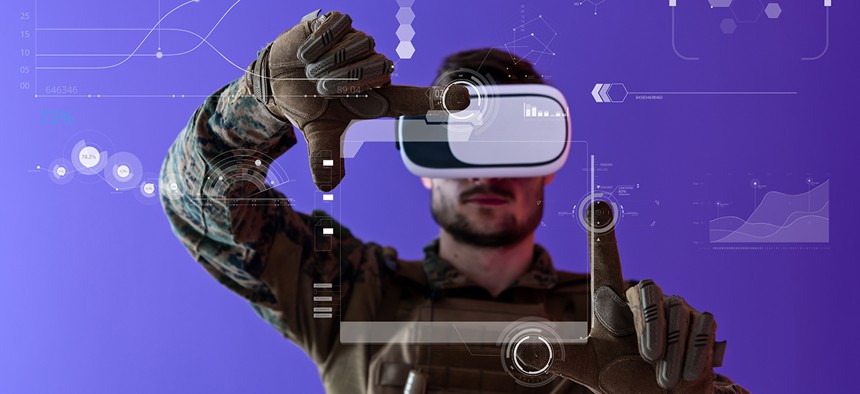sponsor content What's this?
AI in defense turns potential into reality

Presented by
Google

The recent boom of interest and investment into artificial intelligence tools means we are witnessing a significant shift in the landscape of defense operations. While AI has long been heralded as a potential game changer for the future, often as a quasi sci-fi tool, its adoption is becoming more of a present reality than a distant prospect. In fact, its integration into defense operations is already accelerating missions across the board.
Supporting, not supplanting
Respondents in a recent Google Cloud-sponsored survey on artificial intelligence say that AI is being harnessed to streamline processes and enhance data analysis for decision-making. Unfortunately for sci-fi fans, the focus is less on deploying robotic arms and more on leveraging AI tools to collate and analyze data effectively while automating repetitive tasks. Instead of robots coming to take our jobs, this strategic approach underscores the importance of these tools in supporting human decision-making, rather than replacing it.
Protecting people and privacy
However, the possibilities of AI also come with some challenges, particularly in the realm of security and privacy. Defense respondents are particularly vigilant about potential adversarial attacks and third-party access to sensitive data. These concerns, coupled with budget constraints, the shortage of skilled staff, and integration challenges, highlight the complex landscape agencies must navigate as they make plans for AI adoption.
These concerns may be particularly top of mind because very few agencies are relying solely on internal resources to accomplish their AI goals. Eighty eight percent of respondents to the survey report that their agency is partnering with commercial providers in some capacity, using both internal and external resources to implement tools. This isn’t surprising – there are significant benefits to partnering with external providers who have the experience and infrastructure to rapidly stand up complex systems or support agency data goals. However, agencies are still responsible for protecting the security of their data and the privacy of their constituents. In the defense space, more links in a chain present more opportunities for vulnerabilities, and so agencies must carefully weigh the potential security risks against the potential mission-crucial rewards.
Strengthening the workforce
These challenges require a multifaceted approach, and the lack of skilled staff remains a top concern. While agencies are actively seeking to bolster their workforce in line with the Executive Order’s hiring push directive, the reality of hiring constraints often means that agencies need to seek support externally. Over two-thirds of defense respondents are turning to contracts with commercial firms to boost their capabilities.
Still, agencies know that their most valuable asset is their people, and primarily look to invest in upskilling and training their own. These investments in a robust and technically skilled workforce are particularly important for defense agencies, where AI is not only a mission support but a mission imperative.
The Executive Order
The Executive Order on the Safe, Secure and Trustworthy Development and Use of Artificial Intelligence serves as a guiding light in this rapidly evolving and sometimes confusing landscape. With its establishment of standards and frameworks, the EO provides a much-needed regulatory framework in a largely uncharted territory. Notably, defense respondents are particularly familiar with the EO, indicating they are keenly aware of its potential implications. Many agencies view the EO as instrumental in shaping their AI strategies, with a focus on improving citizen services and fostering collaboration across government agencies and industry partners.
Looking ahead, the impact of the Executive Order extends far beyond mere compliance. It serves as a catalyst for collaboration and growth, fostering stronger partnerships between government entities and industry stakeholders. By bolstering the government's AI expertise and laying the groundwork for future innovation, the EO sets a precedent for a more agile, responsive federal ecosystem.
The AI of today
AI is no longer a distant promise but a tangible force shaping defense operations today. What’s next? With adversaries like China continuing to invest heavily in their own AI systems, the imperative to remain at the forefront of AI development is at the heart of defense agency strategies. Yet as they work to acquire AI technologies quickly, they remain vigilant as well, prioritizing security and workforce development. The Executive Order offers a roadmap towards progress, and partnerships between federal agencies and industry will likely create rich, collaborative solutions that will accelerate agency missions. The future of AI in defense holds immense promise, driven by collaboration, innovation, and a steadfast commitment to mission success.
This content is made possible by our sponsor Google; it is not written by and does not necessarily reflect the views of NextGov/FCW’s editorial staff.
NEXT STORY: Federal agencies harness AI’s potential





